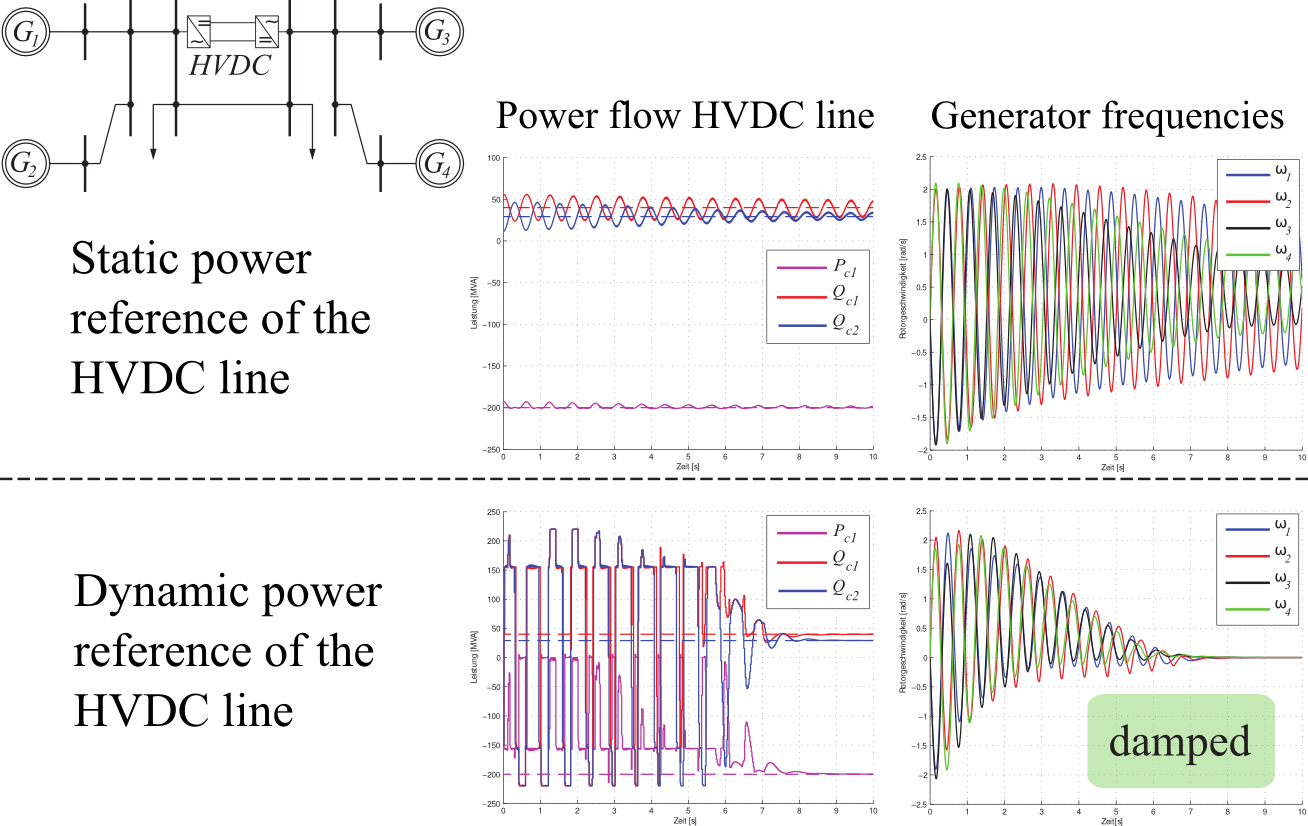Power System Control using high voltage direct current links (HVDC)
The increasing share of renewable energy sources such as wind and solar power and the energy trade liberalization brings the European transmission grid to its boundaries. To compensate these uncertainties, the transmission grid needs to be controlled more actively to guarantee transient stability, voltage stability and to damp power oscillations. Such active grid control can be achieved through Voltage-Source-Converter based High-Voltage-Direct-Current Links (VSC-HVDC) links.
Research objectives and methods
The research goals include finding the optimal placement of VSC-HVDC in a meshed transmission grid, as well as designing a control scheme to manipulate the active and reactive power flow in order to damp power grid oscillations and to guarantee voltage and transient stability.

To achieve good control performance, the global power grid controller is implemented using a Model Predictive Control (MPC) strategy. This allows to resolve the following challenges:
- Processing of delayed and uncertain discrete power system measurements.
- Guarantee of physical and operational system constraints of the HVDC links and the power system.
- Flexible adjustment of the grid controller to new network topologies or grid parameter, such as added generation units or the loss of AC lines.
Related publications
- A VSC-HVDC Decentralized Model Predictive Control Scheme for Fast Power Tracking
- Stabilization of Large Power Systems Using VSC-HVDC and Model Predictive Control
- Placement of HVDC links for power grid stabilization during transients
- Actuator performance evaluation using LMIs for optimal HVDC placement
- Grid stabilization through VSC-HVDC using wide area measurements
- Constrained optimal control of VSC-HVDC for power system enhancement